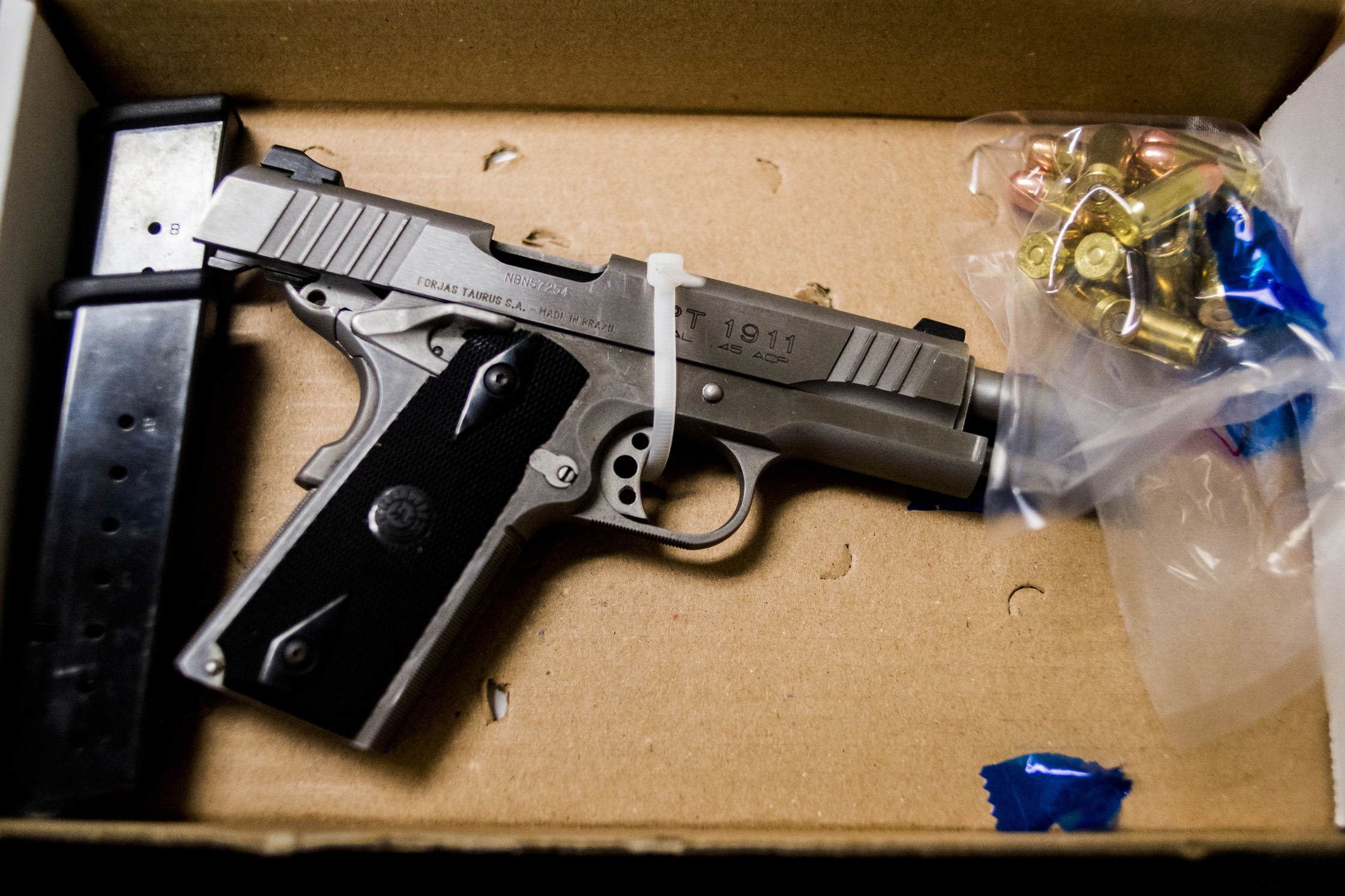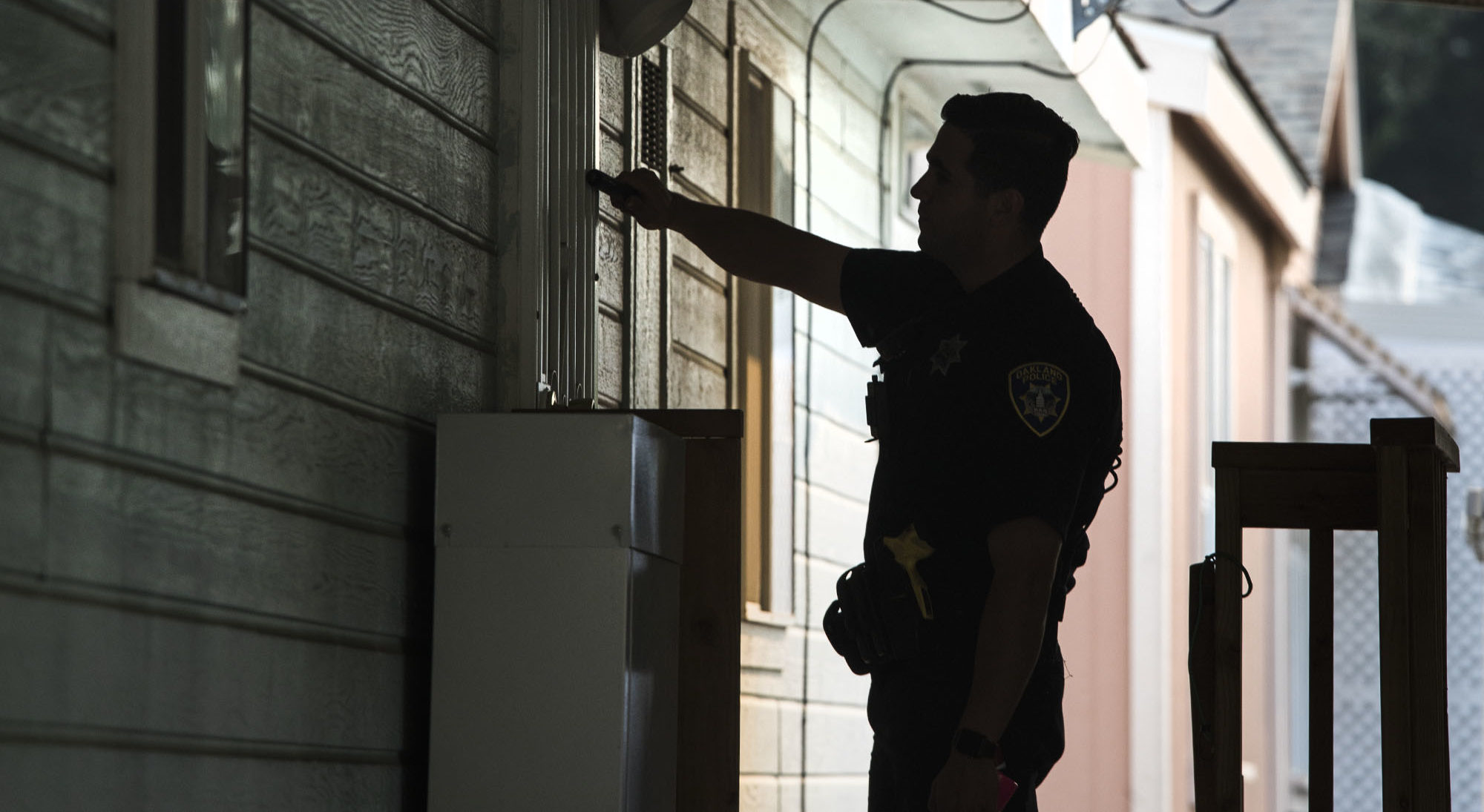Earlier this year, so-called red flag laws went into effect in both New Mexico and Virginia.
The laws have emerged as one of the most popular solutions to gun violence. But how do they work? And do they work at all? We break down the basics:
What exactly is a red flag law?
These policies have several names. While the term “red flag law” is the best known, in this story we will use “extreme risk protection order” — a verbose but more accurate description.
An ERPO is a legal tool to remove firearms from people who are deemed to be at high risk of committing violence. In most of the states that have these policies, law enforcement or family members may petition a court to temporarily suspend an individual’s right to possess or purchase a firearm. The petitioner must submit evidence that the person is a danger to themselves or others.
After an order is filed, the recipient usually receives a notice and a hearing, at which a judge will determine the length of the gun prohibition. Most states allow courts to issue orders as long as a year. Others, including Illinois and Vermont, set the timeline at a tighter six months.
In extreme cases in which an individual presents a clear and immediate danger, courts may grant ex parte orders, which are administered immediately, without notice to the recipient. Ex parte orders tend to be shorter — they’re designed as an emergency measure to stop the threat of imminent violence.
How many states have ERPOs? When did they become popular?
Nineteen states and Washington, D.C., have some sort of ERPO law on the books. Several other states are considering them.
The nation’s first ERPO law was passed in 1999 in Connecticut, in response to a mass shooting at the state’s lottery headquarters that left four people dead. Indiana passed a similar law in 2005, after a man diagnosed with mental illness went on a rampage killing his mother and a police officer, and wounding four more officers. Months before the shooting, authorities had seized eight firearms and hundreds of rounds of ammunition from the gunman’s home, but had been forced to return the weapons under state law.
For nearly a decade, ERPOs fell under the radar of state legislators. Then, in 2014, another mass shooting brought them to the fore. In May of that year, a young man in Isla Vista, California, committed a string of murders that left six people dead and more than a dozen injured. Many of the victims were students at the nearby University of California/Santa Barbara. Prior to the shooting, the gunman displayed concerning behavior, prompting a welfare check from police. But he had not violated any laws, and authorities took no action to disarm him. California lawmakers passed a ERPO law by the end of 2014.
The Isla Vista killings prompted California’s neighbors Washington and Oregon to pass ERPO laws. But it was the school shooting at a high school in Parkland, Florida, in 2018 that made the policy a talking point in state capitols from coast to coast. As with the Isla Vista shooter, the Parkland gunman had displayed clear warning signs and had come into contact with the legal system. But Parkland also gave the gun reform movement new momentum and urgency. In an emergency legislative session, Florida lawmakers passed a ERPO law. In the next 12 months, nearly a dozen states followed suit. Similar laws went into effect in Nevada and Colorado in the early days of 2020.
Status of State ‘Red Flag’ Laws
Source: State legislatures; Ballotpedia. [Graphic: Daniel Nass]
Many of the states with ERPO laws are controlled by Republicans. Why is that?
This speaks to the bipartisan nature of ERPO laws. They allow Republicans to focus on perpetrators rather than guns. This has prompted everyone from President Donald Trump to the National Rifle Association to at least flirt with the idea of supporting ERPO laws. In August 2019, Senators Lindsey Graham and Richard Blumenthal introduced a bipartisan bill to establish a grant program for states to implement their own ERPO policies. However, the federal bill remains stalled — and despite the NRA’s support for ERPOs in theory, it has fought several proposals at the state level.
So what are the objections to ERPOs?
There is a sizable chunk of the population that fears ERPOs put us on a slippery slope of government overreach. Chief among the concerns is that police or people in personal disputes will use the law to harass and disarm gun owners. There’s even a community on Reddit dedicated to chronicling alleged abuses of the laws.
Critics of ERPOs can be organized into two general camps. The first raises an eyebrow at the constitutionality of the policies, fretting that they weaken or violate the Second Amendment. The second focuses on questions of due process: Do ERPOs provide police and petitioners a means to conduct illegal searches or intimidate enemies?
Such concerns have put ERPOs at the center of the Second Amendment sanctuary movement (which we explained here).
Do ERPOs save lives?
That’s the million dollar question. But the available data and anecdotal evidence is promising.
Interestingly enough, while most ERPOs have been passed in response to mass violence, the existing research shows they have significant potential to reduce suicides. In 2018, a team of psychiatrists led by Duke University’s Dr. Jeffrey Swanson examined the efficacy of Connecticut’s ERPO policy. Swanson’s team estimated that for every 10 to 20 gun seizures, one suicide was prevented. Another study, looking at Connecticut and Indiana’s ERPO laws, found marked decreases in the states’ gun suicide rates — 7.5 and 13.7 percent, respectively — following implementation.
Neither of the aforementioned studies found ERPOs to have a measurable effect on homicides. But reports examining the impact of more recent laws present compelling anecdotal evidence that they have the capacity to prevent mass violence. An August 2019 study that looked at red flag laws in California between 2016 and 2018 found that 21 of the petitions disarmed potential mass shooters. While the study’s authors noted that it’s impossible to know if violence would have actually occurred if these people were never disarmed, they wrote that “the cases suggest that this urgent, individualized intervention can play a role in efforts to prevent mass shootings.”
Investigating America’s gun violence crisis
Reader donations help power our non-profit reporting.
In February, Giffords Law Center, the gun control advocacy group, published an evaluation of ERPO usage in Broward County, Florida. Researchers obtained case files for the 257 unique petitions filed in the county over a one-year period, starting in March 2018. The records detailed a litany of cases in which subjects had made explicit threats of violence or displayed extremely concerning behavior. In one instance, a man threatened to shoot his wife, a relative, and his pastor during a church service. Nearly half of the cases involved threats of self-harm.
Are other cities using ERPOs that aggressively?
It’s one thing to have a law on the books, it’s another to see it applied. Late last year, The Trace examined the inconsistent application of California’s ERPO law. We found that some of the state’s largest counties, like Los Angeles and San Francisco, barely used the law at all. Meanwhile, officials in San Diego issued more than 300 gun violence restraining orders, by far the most of any county. According to the San Diego City Attorney’s Office, the city has used the law to seize guns in a variety of scenarios, including from would-be mass shooter wanting to copy the killing spree in Las Vegas, to a man drunkenly firing at animals in a residential neighborhood.
State authorities are aware of these discrepancies. The California Legislature recently approved $250,000 for training to encourage the law’s use among law enforcement agencies. A similar effort is underway in Illinois.


